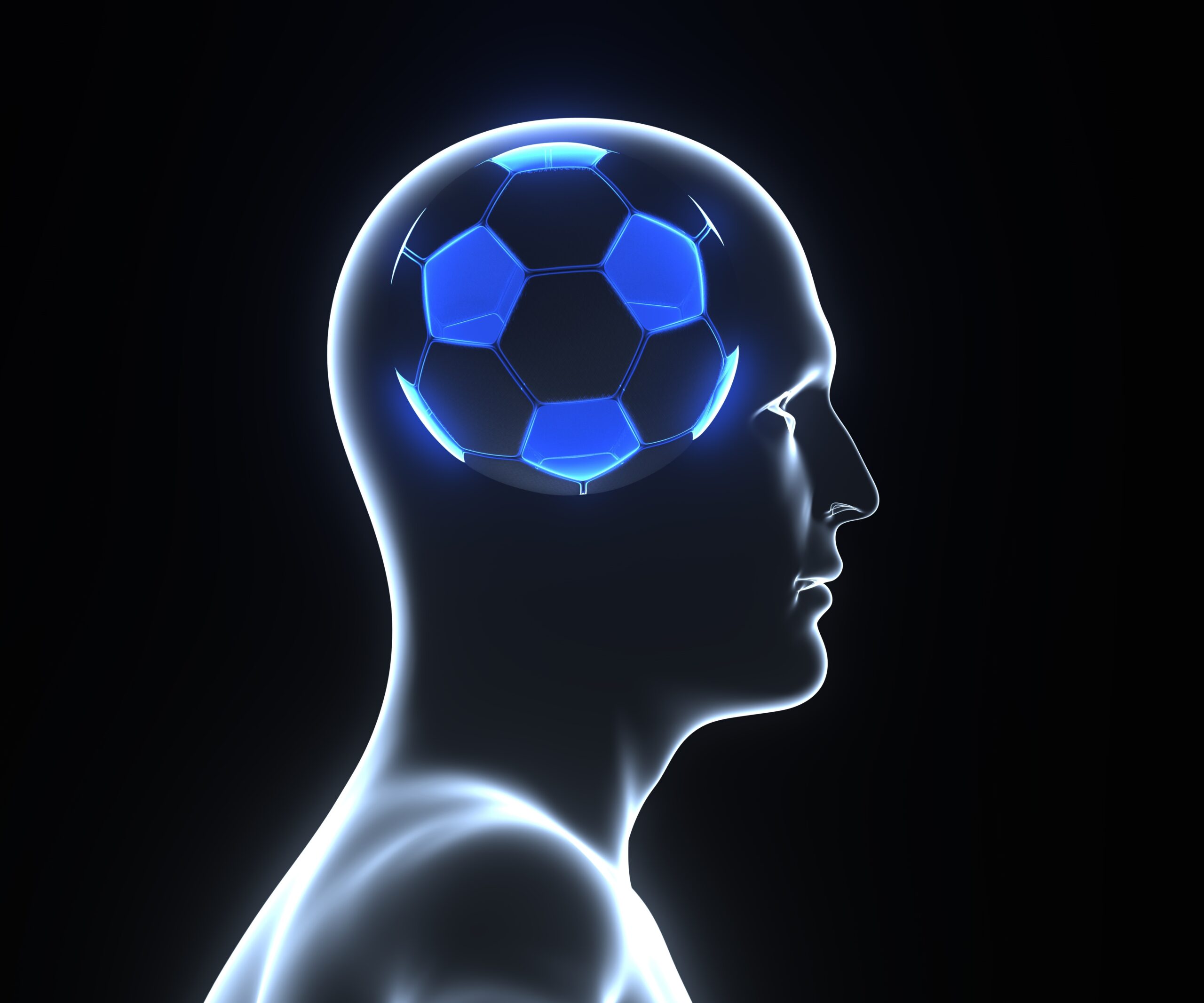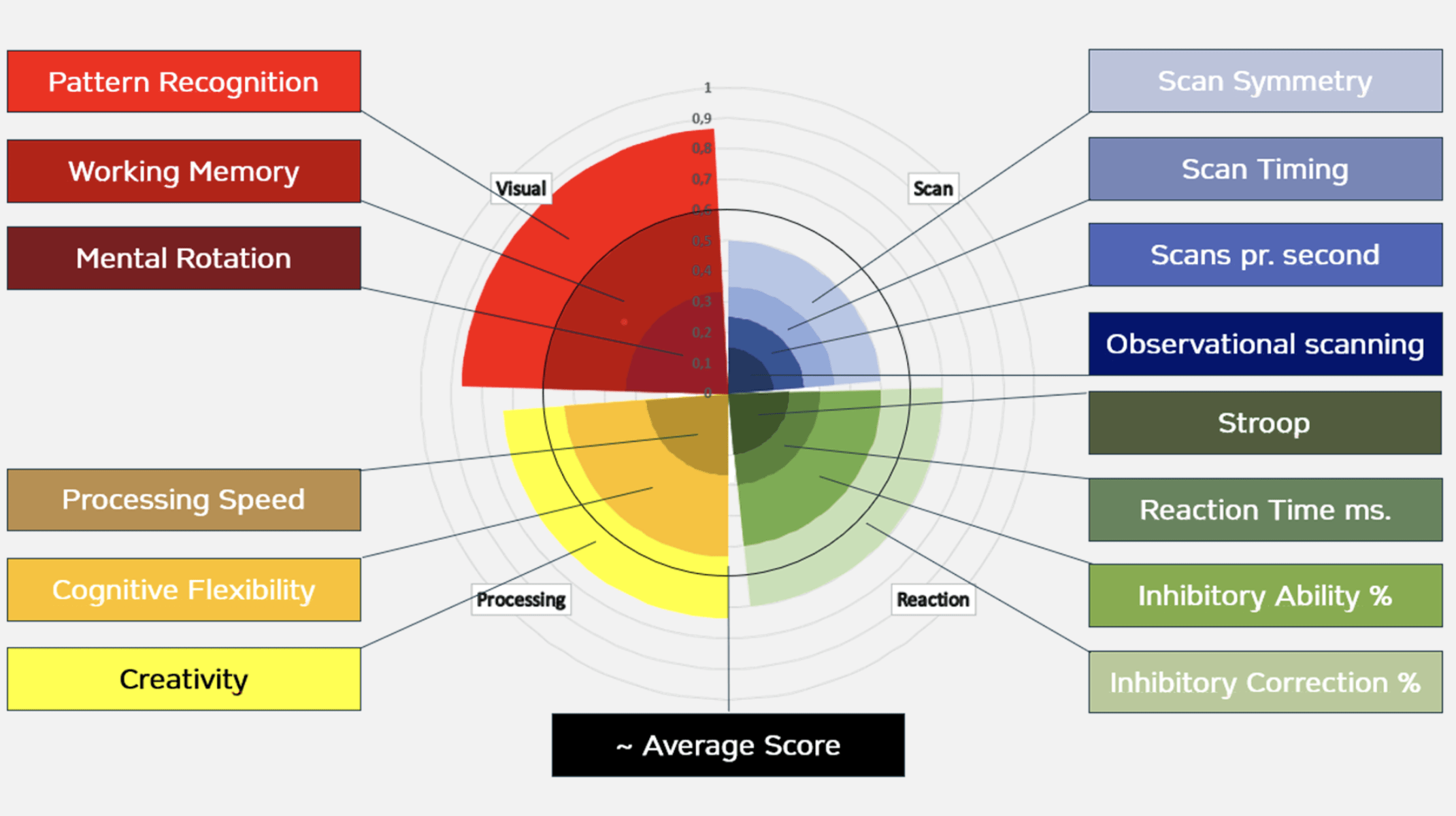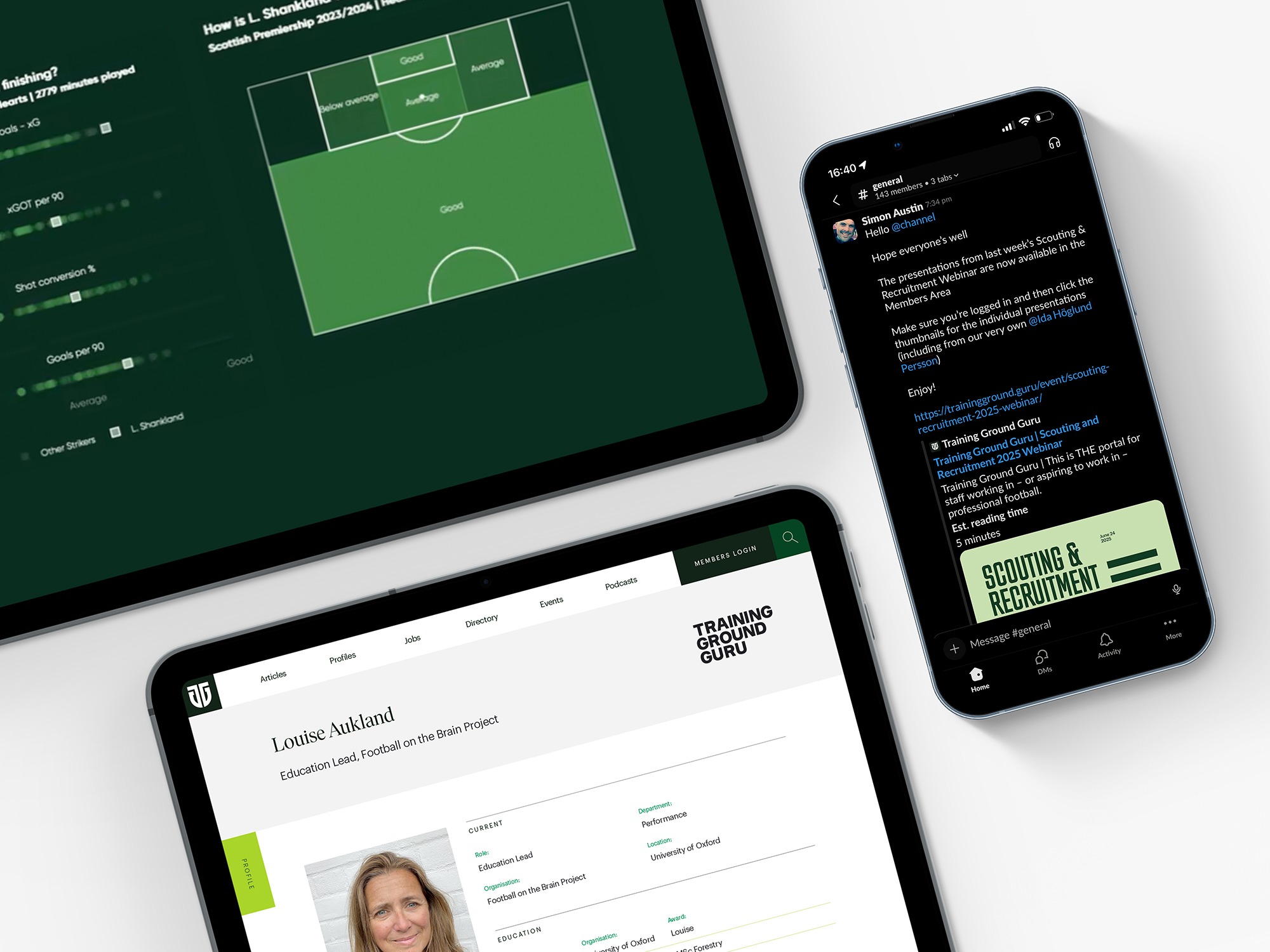
Jes Buster Madsen: Creating a framework for cognitive neuroscience in football
Written by
Jes Buster Madsen
July 9, 2025
Cognitive neuroscience is a hot topic in modern football at the moment.
You’ll see lots of articles and podcasts about it. Many people are trying to solve this problem of how to utilise science about the brain to develop better players, scout better players and develop the team.
I’m a Master in cognitive neuroscience. I did research in Alzheimer’s disease; I did research in medical pharmacology, dopamine systems, pain and so forth.
When I was hired at FC Copenhagen, it was during corona and I was doing research at a hospital looking at depressed individuals who took psilocybin, which is magic mushrooms.
Then corona came, I didn’t have anything to do and I realised that there was little literature on football and neuroscience and I thought, ‘Does FC Copenhagen, my favourite club, know about this research?’
So I called the Director and he invited me in and we had a meeting. And, basically, what I told him is don’t buy any products, don’t believe in anything, you have to start from scratch. Two weeks later he offered me the job of Head of Research and Development.
For the last three-and-a-half years we’ve been trying to create a framework for cognitive neuroscience in football, create assessments and utilise this in terms of scouting and training methodology.
Developing a theory of cognition in football
We’ll start with a theoretical framework, because that was the thing I looked a first. Basically, there was no real hypothesis, no theory that we could base our research on when we started.
The second thing we wanted was some data. We needed cognitive assessments to actually measure our players in terms of cognitive functions. Then, in the end, we also wanted some type of training methodology.
The last three-and-a-half years I’ve been in FC Copenhagen and we have a link to Copenhagen University. Our vision was basically to take cognition and use that for scouting players, evaluating them and for training methodology.
First, we needed to develop a theory of cognition in elite football.
Then we needed to create a football-specific cognitive assessment tool and to impact training methodology. Currently, there are quite a lot of products on the market that are selling some type of cognitive assessment.
It might be BrainsFirst, the SoccerBot and so forth – it is definitely a market that is exploding. But at the moment there are no real good solutions yet and no one has really found the golden bullet for how to do this.
So when we talk about cognitive assessment tools, people should be quite critical. You can do cognitive assessments and you’ll get data on your players. But what does it actually mean in terms of the game?
The three stages of cognition
It’s a constant loop that happens within the brain – it might happen millions or even billions of times within a game. The idea is that you have three stages of cognition and I’ll go through them.
First of all, we have what we call unconscious pre-processing of the environment. That would be scanning and attention to relevant stimuli. The reason why attention and scanning are important to put together is that you can look at something but not really see it.
Attention allows you to actually see the things you’re looking at. So the priming of attention is extremely important for coaches if they want players to look at the things they’re interested in.
Secondly, there’s pattern recognition.
When you view the world, you view it through a pattern. It’s very important to understand what that means in terms of tactical training, in terms of feedback from coaches.
What are we training? Which patterns are we training the players to perform? After that there’s an anticipation, which is more like a prediction of what I think will happen in this situation. Then you have a situation assessment, also called working memory, in which this pattern is presented and it becomes more conscious afterwards.
You have now a response selection, meaning that you will unconsciously value different types of decisions based on your experience, your skill level, your personality. Some players are more reward seeking than others. There are these pluses and minuses as you quickly evaluate what to do?
Of course you have executive functions which can then change these response selections. It might be a tactical message from a coach that will go in and change these response selections.
If you have high cognitive flexibility, then after that there’s an action. So you play the ball, you run in pressure, you do something and there’s an outcome.
But then you have the third stage and that’s the feedback loop, which is extremely important because that’s what allows the system to constantly change.
So it’s actually dopaminergic structures in the brain. What basically happens is that you’ll get a feedback within your reward pathway telling you whether the situation lived up to what you thought.
If a good thing happens, that will increase your likelihood of doing it. So this system is constantly updating, constantly changing. And, of course, if you can understand the specific components, then you can start to analyse players in terms of what they are good at cognitively.
1. Pre-processes of decision making (assessing the play)
First of all, this is the pre processes of decision making. Here we have more decision-making and outcome evaluations. In football, we are so focused on the actions and the outcomes.
A lot of our statistical models look at what happened. But what we’ve been arguing is that if you want to understand what happened, you need to understand what went on before the decision, because otherwise you might falsely interpret the situation.
So we wanted to say that in order to adequately evaluate decisions and the consequences, we have to understand the pre-processes that precede decisions in football. So I’m going to show you just an amazing video of Kevin de Bruyne.
He’s constantly scanning, using attention, making a small decision to go somewhere else but not really going into action. But I don’t think his action is only when he receives the ball.
His action is actually constantly choosing to stay put or do something else. So Bernardo Silva is out there, he stays put, keeps scanning the environment.
This process is happening constantly. He’s analysing it through the patterns. He’s especially good at staying put and waiting for the right situation. We could actually have the model underneath showing what is he doing now, what’s going on in his head, what is he most likely analysing.
This would be stage one attention, scanning, pattern recognition, anticipation and working memory. That would be the continuous assessment of the current play situation.
It’s highly automatic and very reliant on experience and skills. One of the reasons, I think, why some clubs really prefer to have very, very tight styles of play is because this allows you to have a faster system processing patterns, environments and so forth. But of course that leaves you slightly less flexible.
Currently, there’s a lot of focus on scanning. A lot of research has been done on that and I think the research is phenomenal. But what we’re trying to say is that scanning is just one part of the cognitive process.
Scanning is not ALL cognitive functions. If you don’t have attention that’s primed in the correct direction, then why are you scanning? If you don’t have pattern recognition that’s trained to look for the things you’re supposed to see, why are you scanning?
Geir Jordet – I have a lot of respect for his research – was focused on players receiving the ball. And a lot of the time that was with their back to the goal.
And he did that because that was the best way to measure it from a scientific point of view. But, at least in Denmark, this made a lot of coaches make players receive the ball with their back to goal. You played the ball and then they said, ‘right, left, scan, receive the ball.’
But they’re just replicating a scientific method, they’re not replicating the game. So it’s not a good way to train it. With this model, we could say, ‘First of all, our player should be up on the side they received on and they need to know what they’re looking for when they’re scanning.’
So we would create what we call intentional scanning.
2. Executive functions (action selection and execution)
Then we have stage two, which is executive functions, cognitive flexibility, response selection, decision making. Here you have evaluation of relevant response options in order to select and execute a particular action.
And so basically, I’m not really interested in decision making, and I’m not really interested in the outcomes, because I think it’s basically a tactical question. And I shouldn’t go as a neuroscientist to our first-team coach and say, ‘That was a bad decision.’
That’s not really what I’m supposed to do. But what I AM supposed to do is to make sure that our player is trained so well that whatever our Head Coach says, they have the capacities cognitively to actually perform it.
We want to make sure that the bad decision is not done due to bad stage one processing, but more just due to bad decisions or a wrong tactical message.
3. Feedback loop (assessment of outcome and feedback)
The last thing is this reward pathway, which is constantly updating the system based on the reward-prediction error.
The reason why this is important to understand is because the reward-prediction error is basically the driver of motivation and decision-making. This is done by Wolfram Schultz, a wonderful researcher at Cambridge, back in 1998.
Let’s say I’m walking down the street and I see Simon. He’s there, no response, but suddenly he pulls out an ice cream: ok, there’s the reward. Dopamine spikes, amazing. Simon gives me the ice cream, I’m happy.
Next day I’m walking and I see Simon again. But now, because he gave me an ice cream yesterday, the reward is already there.
He gives me the ice cream and there’s actually no reward in the brain, because it was the same. So rewards are not the actual reward, but more the prediction thereof.
If he didn’t have an ice cream, the dopamine would fall and then the next day that I see him, my drop in prediction would fall. This is what leads decisions and motivation.
The reward-prediction error is really important in terms of how the system updates and how it chooses new decisions or keeps doing decisions.
Cognitive assessment tool
We created this cognitive assessment tool in a collaboration with Be Your Best. We utilised their VR system and implemented cognitive tests into it.
It’s called the BYBCAT (Be Your Best Cognitive Assessment Tool). Secondly, we used psychometric tests to create something called Observational Cognitive Scouting, which is basically looking at players with a methodology based in the model.
Then you just tag and create data using this system. And then of course you summarise the score in a cognitive profile.
So first of all, VR. You play this for 12 minutes, you think you’re playing a game, but really we’re measuring your attention, you’re scanning, your working memory, all these kinds of things. Secondly, we give you different types of cognitive tests: mental rotation test design, fluency trail making, stroop test.
Secondly, it’s a type of general IQ assessment. We always say in the club that IQ doesn’t really affect performance, but it affects off pitch performance.

An example of a cognitive profile
Coach is key
The coaching staff is the most important thing in all of this, because I’m not doing the training, I’m not doing the feedback, I’m not doing the exercises.
They have to understand this, they have to buy in on it. Four times a week we have individual training sessions and have added cognition to those.
It might be a striker has a finishing drill, where before that they would just look at the ball the whole time: receive the ball and kick. We realised that actually some of the best strikers in the world spend most of their time not looking at the ball.
So we shouldn’t make finishing drills where the striker is running into the box looking at the ball. We try to change these things, to add small things that would stimulate cognition. Then we have prioritised players that receive additional video feedback and analysis.
And then every six months we do it again. Our training methodology is around those four things: scanning, inhibition, executive function and visual intelligence, and over time we build up a lot of great exercises.
The biggest mistake I’ve ever made was that in my first year I gave the coaches exercises and they hated them. I understand why – because they sucked, because I’m not a football coach.
We ended up saying, ‘Okay, you make it, I’ll just give you the coaching points.’ And they created a bank of great exercises that have aspects of this related to our style of play.
In the end, the point is to make better decision making, which is the end-point of doing all of this.
Conclusion
In conclusion, if you’re sitting there and thinking. ‘We need to do this,’ then I would say first you need to establish a theory of cognition.
We are publishing our theory, but you can create your own if you want that. That alone is enough, because you can take the model and analyse training, players – you can do so much. Just the theoretical foundation.
You don’t have to buy all these different gadgets. Of course, if you want to do testing, you can buy a reliable cognitive test with some type of football specificity if you want. Then you need to establish knowledge within the club.
It takes a long time, but you need to. Make sure that the right people know and understand this and implement a training methodology. We use a periodisation in it and then created an analytical approach with a mix of qualitative or quantitative data.
This article is for TGG Members
To view this full article you need to be a TGG Member. Join up today and also get full access to:
- 20+ Masterclasses & Webinars
- Full Academy Productivity Rankings & analysis
- Club Directory with 96 clubs & 1,000+ staff profiles
- Personal Profile Builder to showcase yourself to the industry
- TGG Live 2024 & 2025 presentations
